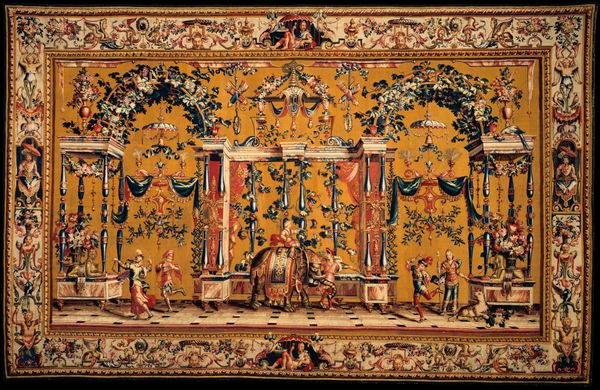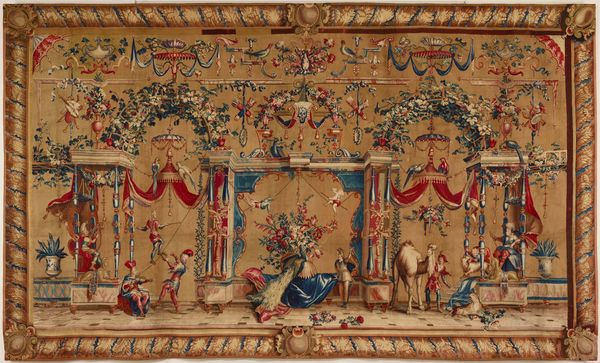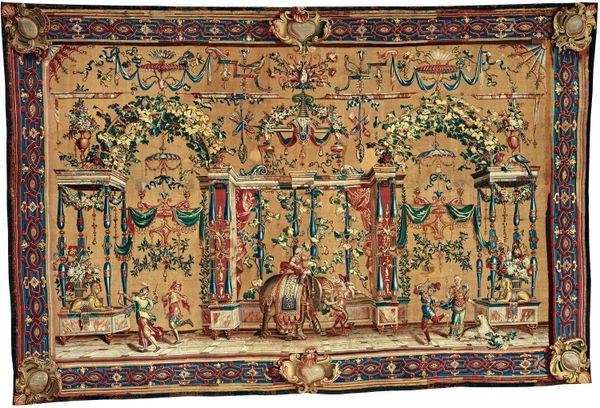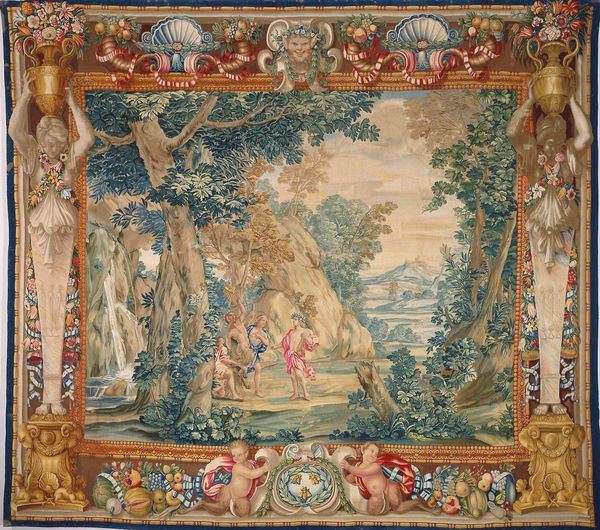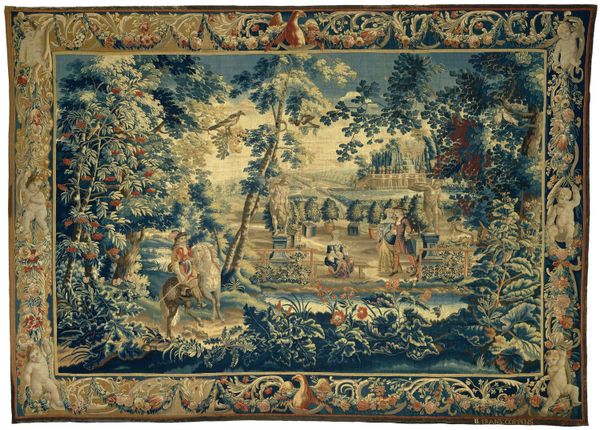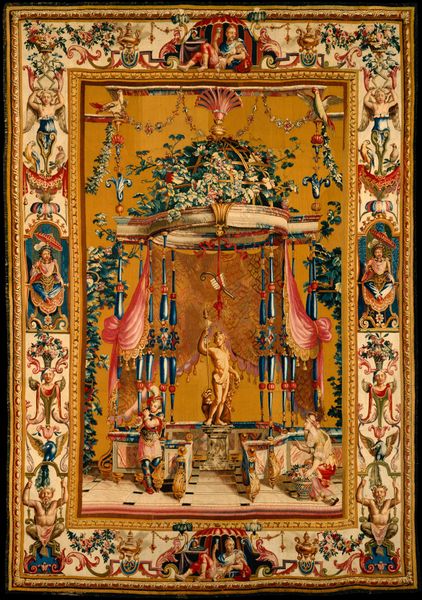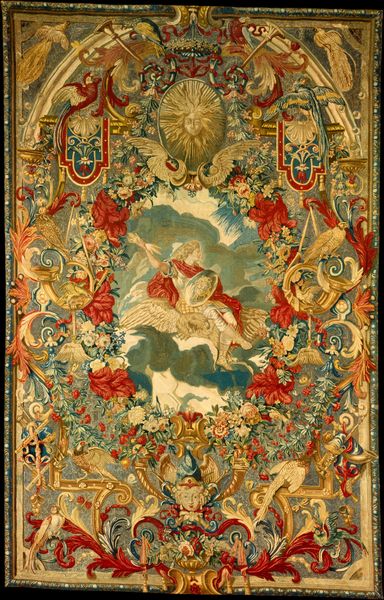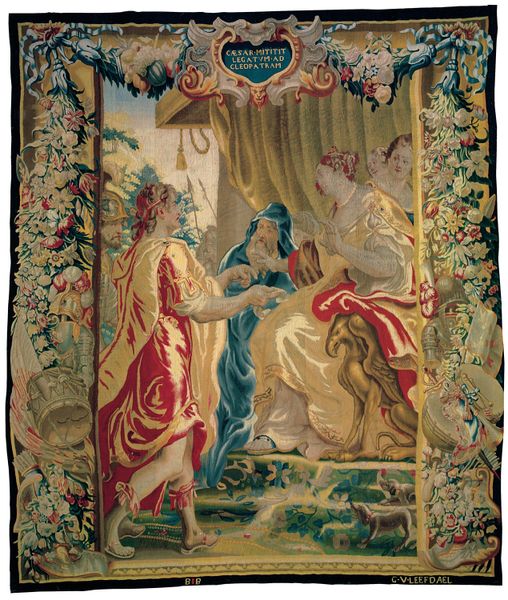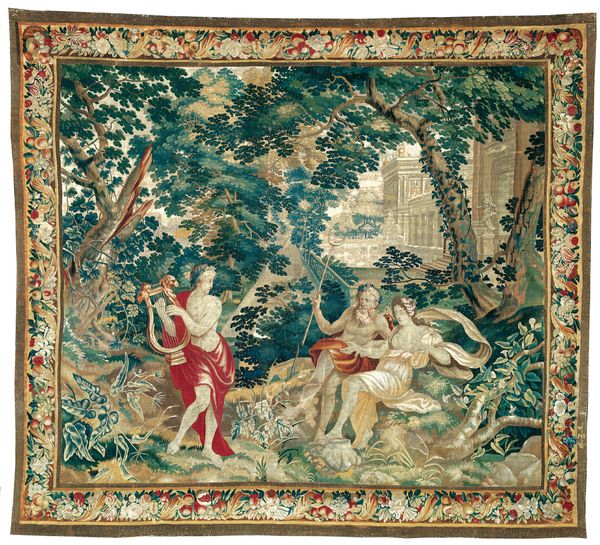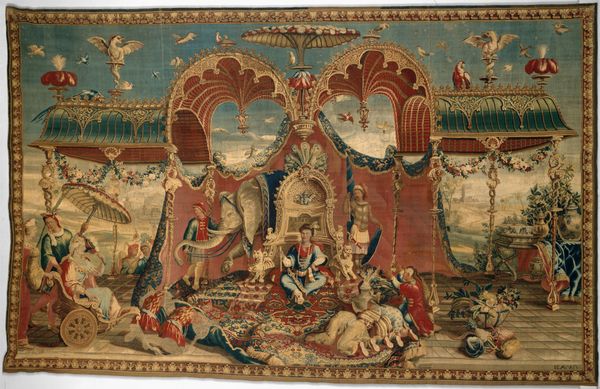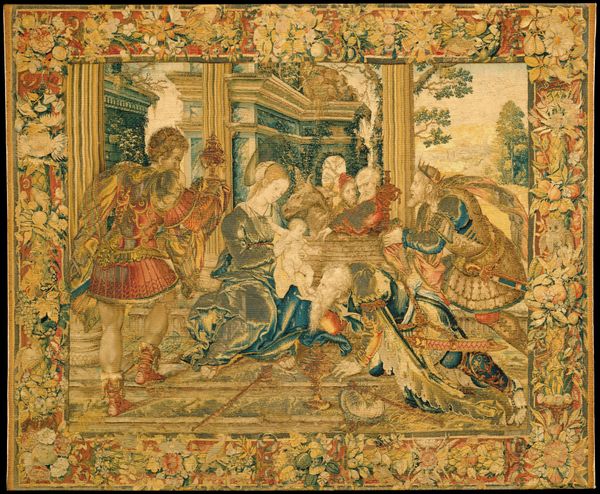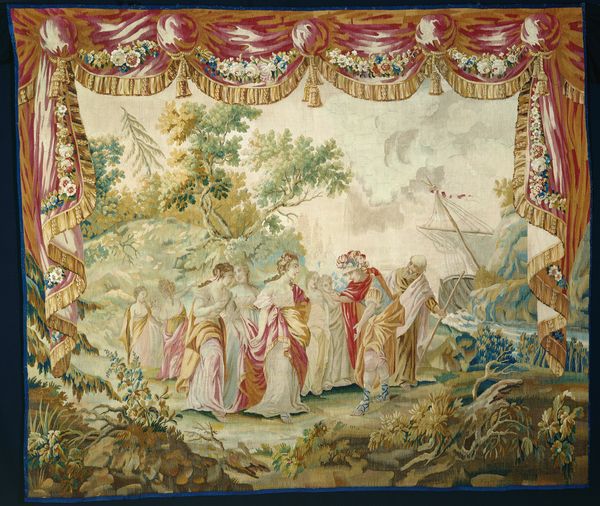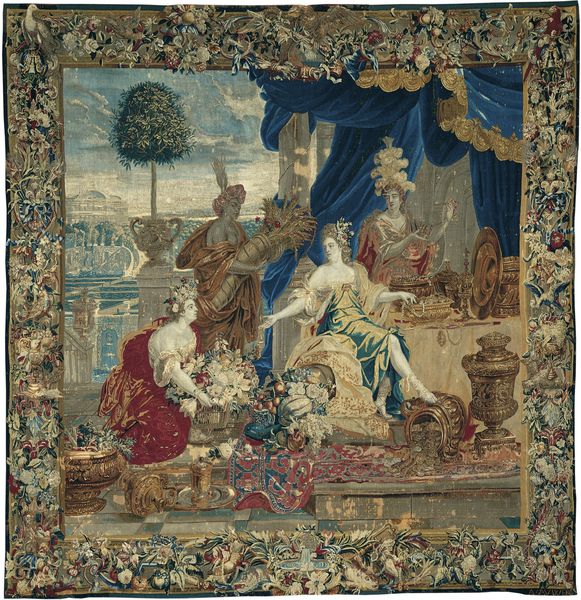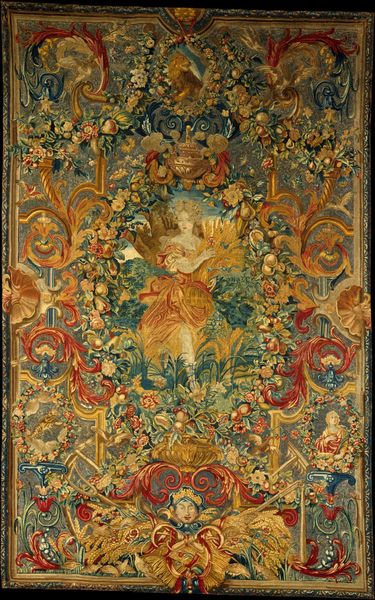
The Camel from a set of five Grotesques 1683 - 1716
0:00
0:00
weaving, textile
#
narrative-art
#
baroque
#
weaving
#
textile
#
genre-painting
#
decorative-art
Dimensions: 9 ft. 10 in. × 17 ft. 4 1/2 in. (299.7 × 529.6 cm)
Copyright: Public Domain
Editor: This is "The Camel from a set of five Grotesques," a weaving made between 1683 and 1716, now at the Met. It's incredibly detailed and ornate, and it strikes me as embodying the opulence of the Baroque. How do you interpret this piece? Curator: What catches my eye is the loaded symbolism interwoven within the grotesque elements themselves. Tapestries like this weren't merely decorative. They acted as silent manifestos, subtly reinforcing social hierarchies and power structures. Who do you think this tapestry might have been made *for*, and what sort of message might it be conveying? Editor: It feels like something made for the aristocracy, someone trying to project an image of worldly sophistication and control over exotic elements. All the flowers and decorations feel like a celebration of wealth. Curator: Precisely! Consider the camel itself. In the late 17th and early 18th centuries, exotic animals served as blatant visual cues of imperial reach and dominion. The arrangement, with its theatrical stage-like quality, transforms lived reality into a spectacle—one consumed, quite literally, on the walls of the elite. Doesn't it feel like Orientalism distilled? How might feminist theory respond to such an object, considering the power dynamics at play? Editor: I see what you mean. It's like the tapestry is performing a sort of domination over other cultures, even reducing them to decorative motifs. From a feminist perspective, it reflects the male gaze, objectifying and controlling the "exotic" for patriarchal consumption. I never would have seen that on my own. Curator: Context is crucial. By viewing these tapestries as active participants in the shaping of cultural ideologies, we reveal the embedded biases that continue to resonate today. Editor: I'll definitely be paying more attention to these layers of meaning from now on! Thank you. Curator: Absolutely. Analyzing art through various theoretical lenses helps to demystify historical narratives and connect them to contemporary concerns, ensuring we engage critically with our visual world.
Comments
No comments
Be the first to comment and join the conversation on the ultimate creative platform.
